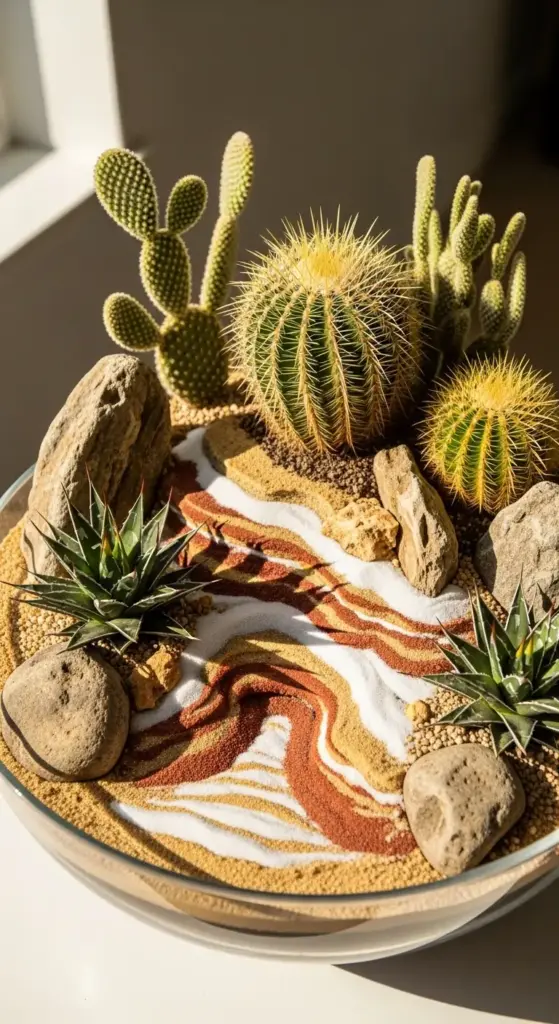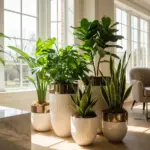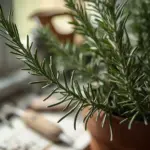4. The Desert Landscape Masterpiece

I used to think desert plants were boring until I visited Arizona and saw those incredible landscapes in person. The colors, the textures, the way light plays across the sand – it’s absolutely stunning.
My first desert terrarium looked like a sandbox with some random cacti stuck in it. Total disaster. But after lots of trial and error, I’ve figured out how to create displays that actually look like miniature desert scenes.
Choosing Authentic Desert Plants That Thrive Indoors
Barrel cactus is hands down my favorite centerpiece plant. These little guys are practically indestructible and have this perfect round shape that screams “desert.”
I killed my first one by watering it too much – apparently once a month is plenty during winter. Who knew plants could drown in dirt?
Prickly pear cactus adds amazing texture with those flat, paddle-shaped segments. The bunny ears variety is especially cute and way less intimidating than the giant ones you see in movies.
Agave varieties bring that sculptural element that makes everything look intentional. Agave victoriae-reginae stays small and has these gorgeous white markings that look painted on.
Golden barrel cactus develops this beautiful yellow color as it ages. Mine started green and now has this stunning golden glow that catches light perfectly.
Be careful with size – I once bought what I thought was a small agave that turned into a monster. Always check the mature size before committing.
The Three-Layer Sand Technique That Creates Magic
This is where most people mess up their desert landscapes. Random colored sand just looks like a craft project gone wrong.
Start with a base layer of natural tan sand – this represents your basic desert floor. I get mine from the hardware store because it’s way cheaper than craft sand.
Layer two is where the magic happens. Reddish-brown sand creates those gorgeous canyon effects you see in Utah and Arizona. Apply it in waves, not straight lines.
White or light gray sand goes on top in strategic spots to mimic wind-blown dunes. The key is making it look random and natural, not like you’re decorating a cake.
I use a small spoon to create realistic sand dune effects. Pile it higher in some areas and let it naturally slope down – gravity is your friend here.
Never mix the sands completely – you want distinct layers that tell a story about wind and weather patterns.
Rock Placement That Looks Like Nature Did It
Rock formations can make or break your desert display. I spent way too much time studying photos of real desert landscapes to get this right.
Group rocks in odd numbers – three or five rocks together looks more natural than pairs. I learned this from a landscape design book and it totally works.
Larger rocks should anchor your composition, with smaller ones scattered around like they’ve been weathered and broken off over time.
Bury rocks partially in the sand so they look like they’ve been there forever. Rocks sitting on top of sand look fake and placed.
Different rock types add authenticity. I use smooth river rocks for water-worn areas and rougher stones for mountain debris.
Angle matters – rocks rarely sit perfectly upright in nature. Tilt them slightly for that weathered, natural look.
Safety Tips That Could Save Your Fingers
Let me tell you about the time I tried to repot a barrel cactus without gloves. Big mistake. I spent an hour with tweezers pulling tiny spines out of my fingers.
Thick leather gloves are absolutely essential. Those thin gardening gloves are useless against cactus spines – trust me on this one.
Newspaper wrapping works great for moving larger cacti. Wrap them like a burrito and you can handle them safely without gloves.
Long-handled tweezers are perfect for placing small cacti in tight spots. I keep a pair just for terrarium work.
Work slowly and deliberately – rushing around cacti is how accidents happen. I learned this lesson the hard way multiple times.
Keep a roll of duct tape handy for removing tiny glochids (those hair-like spines). Press it gently against your skin and pull – works better than tweezers for the really small ones.
Watering Schedules That Actually Work
This is where I killed more plants than I care to admit. Desert plants need water, but way less than you think.
Summer watering happens about every 10-14 days, but only when the soil is completely dry. I stick a wooden skewer down into the soil to check moisture levels.
Winter is different – these plants go dormant and need water maybe once a month, if that. I killed so many cacti by continuing summer watering schedules year-round.
The soak and dry method works best. Water thoroughly until it drains out the bottom, then don’t water again until the soil is bone dry.
Morning watering prevents fungal issues that can develop if plants sit wet overnight. I do all my cactus watering while my coffee brews.
Watch for wrinkled or soft spots – that’s usually overwatering, not underwatering. Underwatered cacti just look a little deflated but stay firm.
Humidity matters too – these plants hate humid environments. If your house is naturally humid, water even less frequently.
Ready to find your zen? The next section reveals how to create a meditation garden that actually helps you relax and focus. I’m talking about the plant combinations that naturally reduce stress and the simple sand pattern that took my anxiety down a notch. Click “next” to discover the peaceful paradise that changed my entire morning routine!









GIPHY App Key not set. Please check settings